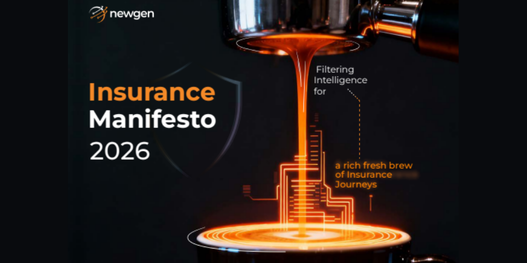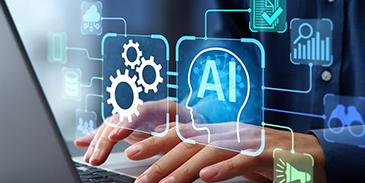Modern enterprises aren’t just expanding, they are transforming. They’re stretching across borders, time zones, and digital frontiers. A single organization might have R&D in Bangalore, customer service in Manila, marketing in Singapore, and leadership spanning New York to Dubai. The ambition? Stay agile, deliver faster, and stay ahead of customers’ expectations.
This is the power of a distributed business model, built for scale, flexibility, and unstoppable growth. Today, success isn’t about being in one place, it’s about moving as one, everywhere.
So, What Exactly is a Distributed Business Model?
A retail chain serving different cities. A bank operating hundreds of branches. A logistics firm moving goods across borders. On the surface, they operate independently—local teams making local decisions. But beneath that autonomy lies a unified purpose. Each location, each branch, each hub contributes to something bigger.
This is the distributed business model in action: decentralized yet aligned, independent yet interconnected.
Why it’s gaining momentum?
- Faster decision-making
- 24/7 service delivery across geographies
- Local responsiveness
Expansion brings friction. Data silos, slow cross-region decisions, inconsistent execution. Teams move fast, but not together. Therefore, to ensure seamless operations and orchestrate everything together businesses need a layer of intelligence into their existing processes: Artificial Intelligence (AI).
AI helps bridge these gaps. It cuts through the clutter, pulls insights in real-time, and keeps processes moving smoothly, smartly, and fast. It brings clarity to chaos, helping distributed businesses act like unified ones.
The Role of AI in Distributed Business Models: Bringing it All Together
AI turns information into actionable insights. It makes operations proactive instead of reactive. Most importantly, it synchronizes expansion efforts, ensuring every business unit, from Manila to Munich, operates with precision, speed, and intelligence. AI empowers distributed enterprises to:
- Understand what’s happening across touchpoints in real time
- Route the right work to the right place, without manual delays
- Personalize customer interactions, no matter the region or channel
- Forecast, recommend, and optimize operations using previously fragmented data
In short: AI helps businesses think, adapt, and move as one.
Key AI Techniques Powering Distributed Business Models
So, how exactly does AI keep a distributed business moving as one? Let’s break down the magic behind the scenes. These AI techniques are quietly transforming how global enterprises think, act, and scale:
- Intelligent Document Processing (IDP)
IDP leverages AI to extract, classify, and organize information from emails, invoices, contracts, and more, turning scattered data into structured insight. It’s how regional branches stay aligned without manual effort. - Natural Language Processing (NLP)
Systems comprehend and respond to human language, across channels, accents, and intent. Whether through a chatbot in Tokyo or a voice assistant in Toronto, customers receive high-quality services. - Predictive Analytics
Predictive models analyze trends, behaviorial patterns, and risks to help act in advance. From inventory management to customer churn, AI turns hindsights into foresight. - Process Intelligence
AI visualizes workflows across departments and regions, identifying bottlenecks, redundancies, and improvement opportunities, so operations can continuously optimize at scale. - Intelligent Workflow Automation
Tasks are automatically assigned to the optimal resource – person, team, or system – ensuring smooth operations across time zones without human oversight.
Real-world Examples of AI in Distributed Business Models
From logistics to healthcare, AI is helping distributed businesses stay coordinated, efficient, and responsive. Here’s how business leaders from different industries are leveraging AI to simplify processes and overcome day-to-day inefficiencies:
- Logistics: Dynamic Response to Disruptions
A global logistics provider uses AI to monitor routes, weather conditions, and deliveries. In case there are issues, the system instantly proposes alternatives, keeping shipments on track with minimal manual input. - Banking: Unified Customer Experience
A bank operating across different countries uses AI to unify customer data across branches, mobile apps, and contact centers. Regardless of the channel or location, representatives access complete profiles for faster, more personalized service. - Healthcare: Smoother Patient Journeys
Hospital networks employ AI to automate form completion, insurance verification, and medical history retrieval before appointments begin, allowing more time for actual care. - Retail: Matching Inventory to Local Demand
Business leaders analyze purchase trends with AI across regions. What’s in demand in one city may not be in another, and AI helps stores stock accordingly. This avoids overstocking and improves customer satisfaction. - Government Services: Handling Public Queries at Scale
Public sector offices use AI to categorize and route citizen requests efficiently. It prioritizes urgent cases, suggests responses, and helps departments resolve issues faster, improving service delivery at scale.
AI Agents in Action
As AI continues to connect the dots across distributed operations, a new capability is beginning to reshape how work gets done, AI agents. These aren’t just chatbots. They’re intelligent, goal-driven cognitive digital agents, who can predict based on model parameters, make informed decisions, and take action without being told what to do at every step. Think of them as digital coworkers embedded across the enterprise, handling tasks, coordinating across teams, and learning as they go.
Why do they matter in a distributed model?
- They don’t just follow the rules, they understand the context
- They can operate independently, across time zones, platforms, and functions
- They adapt to shifting priorities without losing speed or focus
Whether it’s processing claims, routing service requests, or generating insights from scattered data, AI agents bring autonomy, consistency, and pace to business.
AI Agents that Make Distributed Enterprises Think and Act as One
In distributed enterprises, speed, personalization, and seamless coordination are non-negotiable. That’s where Newgen’s AI-first, low-code platform NewgenONE, comes into the fore. To power distributed businesses with agility, speed, and intelligence, Newgen blends automation, content services, and customer engagement into a single, seamless experience.
At the heart of it are purpose-driven AI agents designed to empower every layer of businesses:
NewgenONE Marvin: This productivity platform helps build applications faster, summarize documents, generate customer communications, and extract deep insights, transforming the way teams work, think, and innovate
NewgenONE Harper: A conversion intelligence platform that audits 100% of customer conversations, uncovers intent, and improves contact center performance with real-time coaching, personalization, and behavioral insights, turning every call into a conversion opportunity.
Final Thought
Distributed models are not the future. They’re the present reality. By embedding AI into a robust digital core of content, processes, and communication, enterprises can transform disjointed structures into smart ecosystems. The result? Faster decisions. Lower costs. Satisfied customers.
And above all, an enterprise that thinks, responds, and grows as one.
You might be interested in




